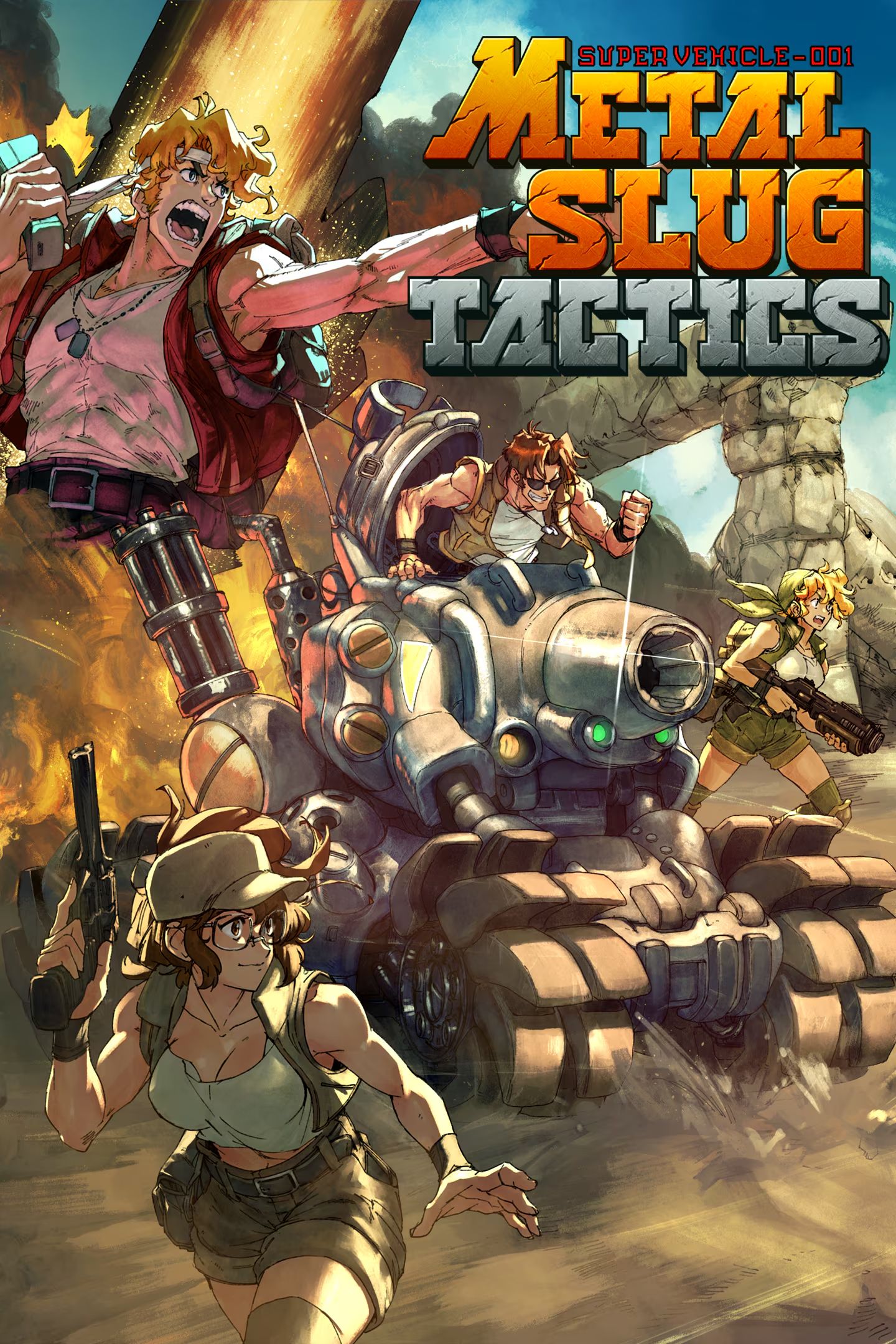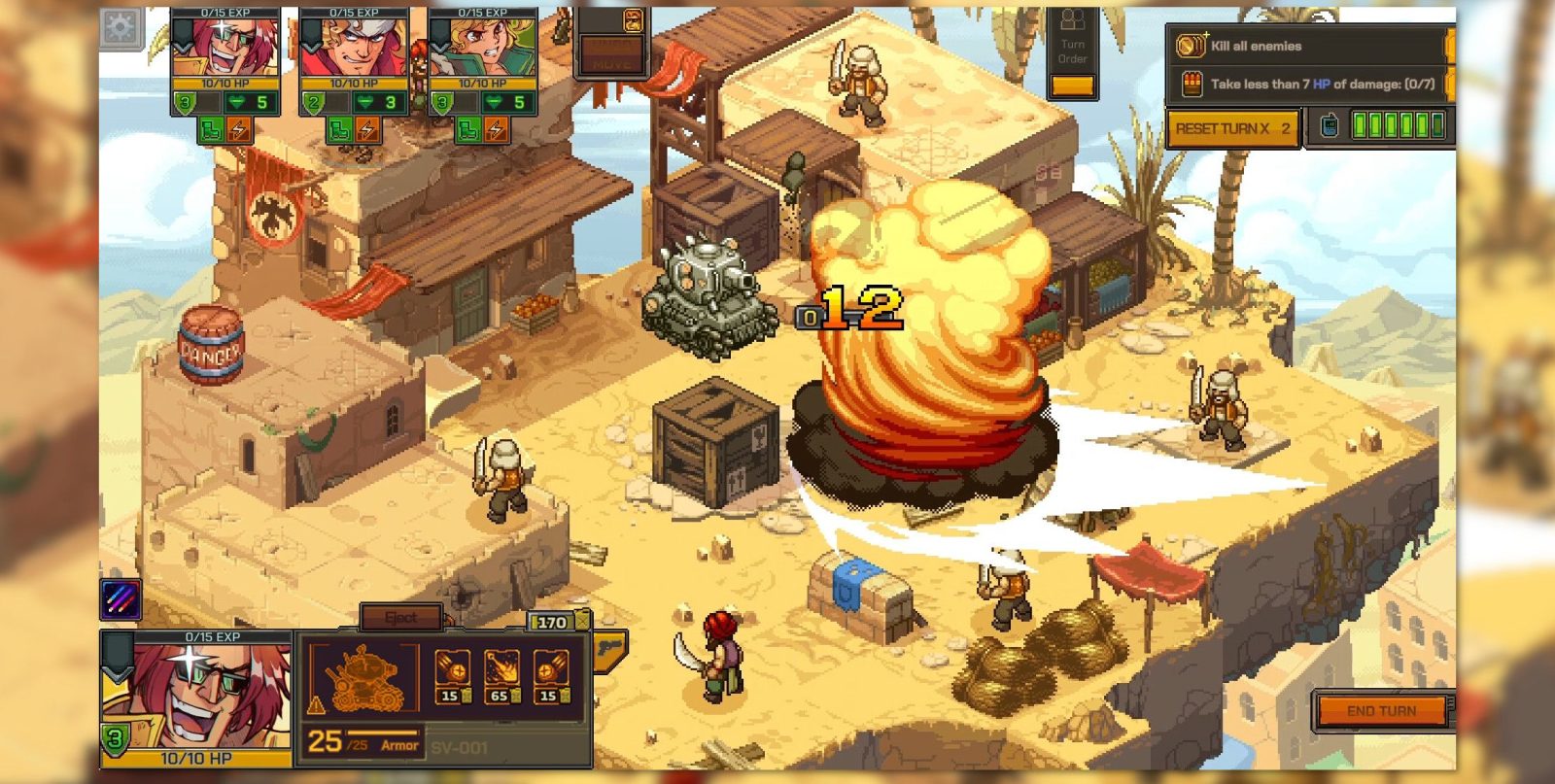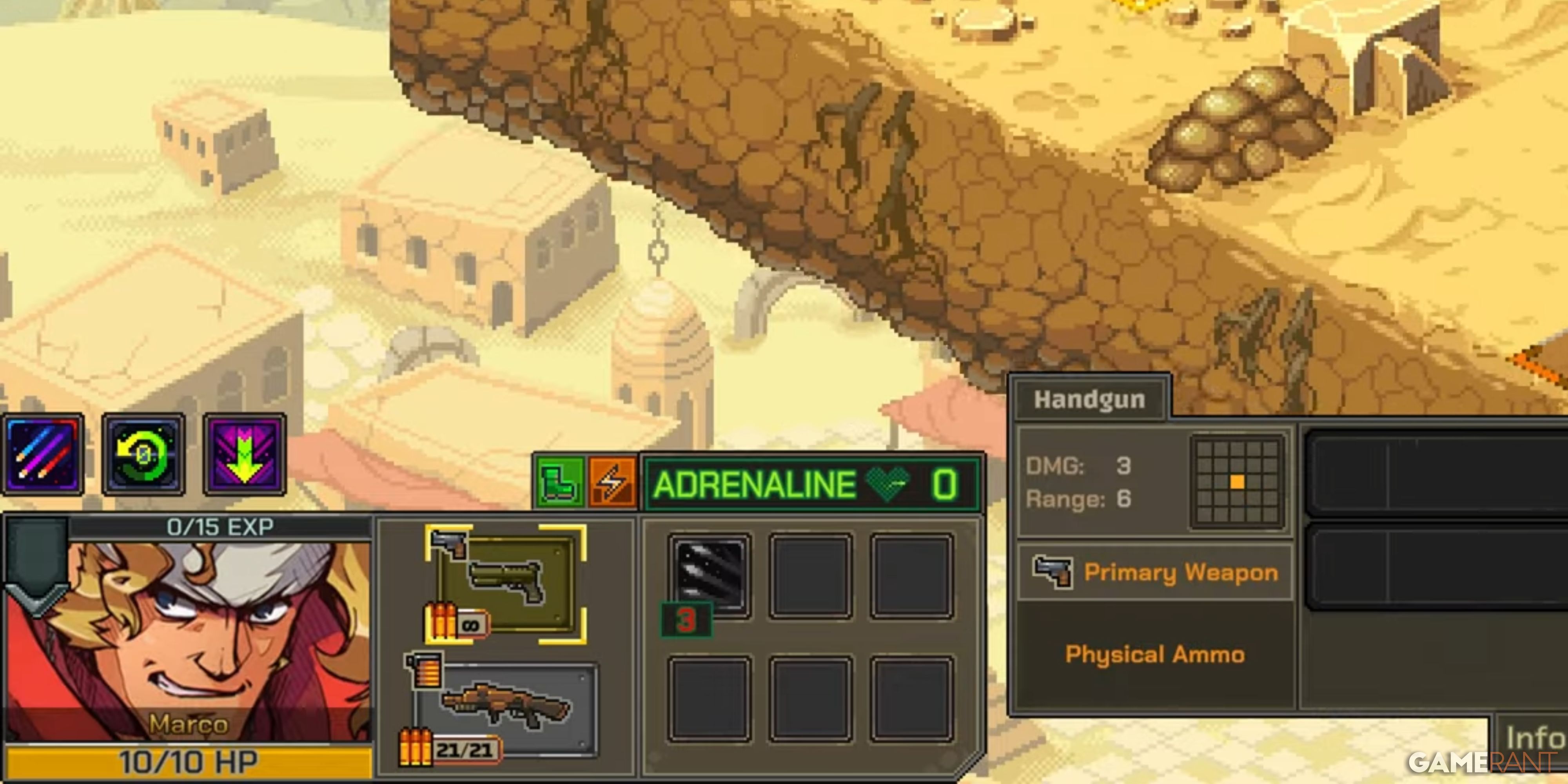Metal Slug Tactics is a major departure from the run-and-gun chaos the series is usually known for, bringing the 2D side-scrolling shooter series to the realm of isometric tactical RPGs. Leikr Studio’s tactical take on Metal Slug also benefits from a highly replayable roguelike foundation that encourages players to experiment with builds, squad compositions, and strategies over many more hours than a typical franchise entry.
Game Rant sat down with Leikr Studio CEO Aurelién Loos to discuss the team’s approach to Metal Slug Tactics given the series’ history of offering adrenaline-fueled shooter gameplay. Loos spoke on the game’s movement system and how it’s an expression of that run-and-gun gameplay, along with the team’s reasoning for going with a tactical RPG in the first place.
Classic run-and-gun shooters like Metal Slug couldn’t feel further from the deliberate, undeniably slow pace of tactical RPGs, but Leikr Studio infused its tactics game with a surprising amount of shooter DNA. Aurelién Loos noted that the game’s movement system was a foundational element. In Metal Slug Tactics, each tile a character moves generates adrenaline–essentially “mana” for special abilities–along with Dodge, the game’s primary means of damage mitigation. Tying offensive and defense capabilities to movement cleverly expresses run-and-gun gameplay, as each character should move as far as it can every turn.
I think the main benefit of working in this universe is that it forces us to think in a very different way. We didn’t just create a usual tactical RPG because, in
Metal Slug Tactics
, everything is about movement. You need to stay on the move; you need to make a move every turn if you want to generate dodging to protect yourself or adrenaline. You need adrenaline to use your most powerful attacks and abilities…That was very beneficial because we created something new. It’s always fun to create something new, but what really pushed us to do that was wanting to have the strong DNA of a
run-and-gun
game in a tactical game.
Another element of Metal Slug Tactics that channels the series’ frantic gameplay is the enemy count; players are often significantly outnumbered during each encounter. Contending with large groups of weaker enemies makes each turn impactful and visceral as handfuls of hostiles are eliminated with one or two solid tactical plays. Combined with the movement system, Metal Slug Tactics feels like a game that belongs in the Metal Slug franchise.
Translating Metal Slug gameplay to a turn-based tactics game sounds like a serious challenge, which poses the question: why did Leikr Studios take this path instead of sticking to the series’ guns? Aurelién Loos says it comes down to the studios’ prior experience with turn-based roguelike games. Rather than trying to create the next mainline Metal Slug, a fresh take on the series felt like a safer bet.
When we started thinking about
Metal Slug
—because we’re huge fans of
Metal Slug
, especially me with
Metal Slug 2
—we discussed it and thought about what we could bring to the table. You can still just open up the older
Metal Slug
games, and they’re still fun and relevant today. But our studio doesn’t have experience in run-and-gun games, so it would have been very ambitious to say, “Oh, we want to make the next
Metal Slug
.” We considered it and made a proposal that fit more with our DNA, which leans toward tactical and strategy games.
Ultimately, making a tactics game inspired by Metal Slug has resulted in a game with unique ideas that might not have been realized if the team had worked within a different IP. Because of this, Metal Slug Tactics is both an authentic Metal Slug game and a tactics game that stands on its own.

Tactical
Strategy
War & Military
- Franchise
- Metal Slug
- Developer(s)
- Leikir Studio
- OpenCritic Rating
- Strong












Leave a Reply